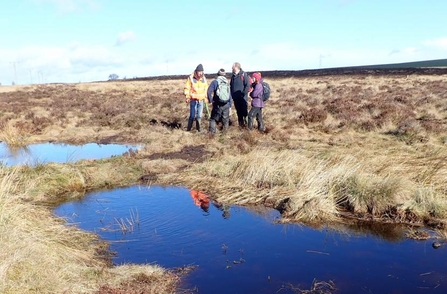Bog restoration works are expected to benefit local water quality and nature, as well as contribute to meeting our climate change targets.
Members of the Ugie Peatland Partnership (UPP), who aim to restore 1,500 hectares of peatland within the River Ugie catchment, were delighted to see the recent completion of peat bog restoration works on Moss of Kinmundy.
The restoration work, funded by Scottish Natural Heritage’s Peatland ACTION fund, should provide multiple benefits, including: increased carbon storage; improved water quality; and better wetland habitats for wildlife.
RSPB have overseen the project management, on behalf of the landowner, from an initial feasibility study through to completion of the project.

